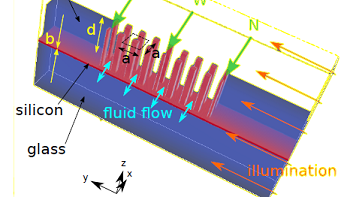
Lab-on-a-chip (LoC) optical bio-sensors are promising paradigms for portable, convenient, and inexpensive medical testing. They enable diagnosing diseases at early stages at home without requiring expensive, time-consuming, external laboratory testing. Our paper, Optical Bio-sensing of Multiple Disease Markers in a Photonic-Band-Gap Lab-on-a-Chip: A Conceptual Paradigm [Phys. Rev. Applied 3, 034001 (2015)] describes the application of photonic crystals to this subject. Unlike previous optical bio-sensors that are based on the shift of a sharp optical resonance in response to the binding of a disease-identifying-protein to an optical micro-cavity, we propose a new paradigm for a medical lab-on-a-chip. This involves a photonic band gap micro-chip with micro-fluidic channels embedded in a glass slide that can provide a much more detailed spectral fingerprint of various diseases or various stages of a given disease using the cascaded transmission of laser light through the chip. It allows, for the first time, the instantaneous identification and differentiation of multiple disease markers in a single diagnostic sample, using transmission of light through a centimeter scale slide.
A remarkable property of Photonic Band Gap waveguides is that they can confine light in the low-refractive-index region (e.g., water in our biosensor). This is especially beneficial for biosensing since the analytes usually reside in the low-refractive-index region. This facilitates simultaneous realization of high sensitivity and low limit of detection,
a pair of conflicting figures of merit for conventional optical sensors.


